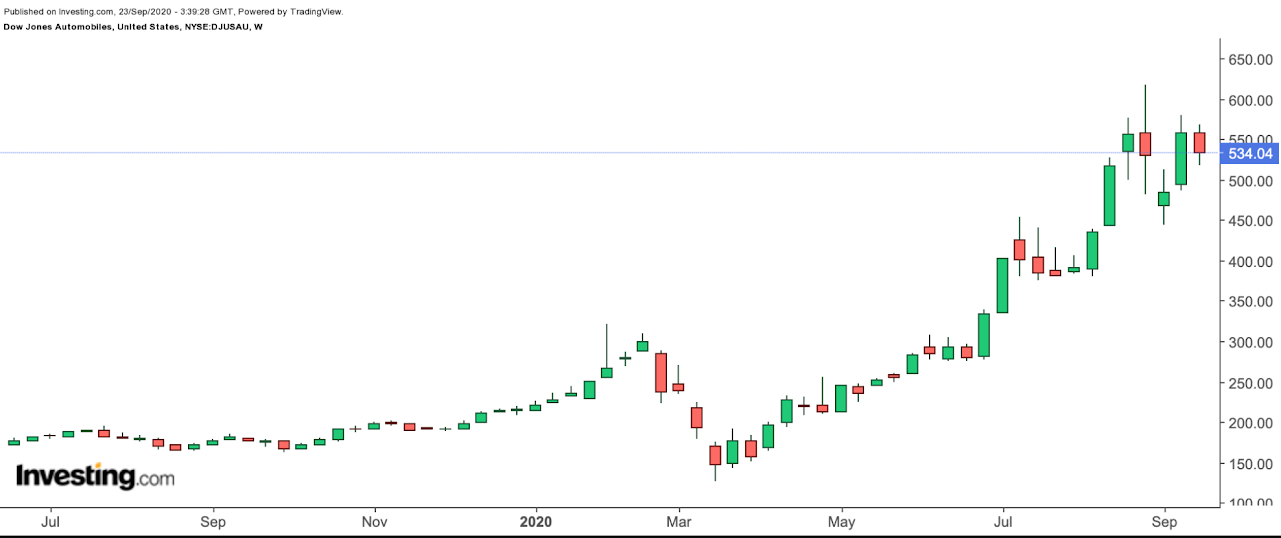Moscow

reports that "San" was the name given by the to the same letter called "Sigma" by the. Inflection [ ] Odd, no gradation Nominative -s Genitive Singular Plural Nominative -s Accusative Genitive Illative Locative Comitative Essive Possessive forms Singular Dual Plural 1st person 2nd person 3rd person Derived terms [ ] Cognate with the Finnish translative ending. Suffix [ ] -s• Of note is that, some speakers, when speaking retroactively about the 2000s, now apply the 2010s' common pronunciation to the 2000s as well. Suffix [ ] -s• 2010 city, 11,738,547; 2020 est. See individual words for precise translations. proper nouns; correct in certain cases, but often seen as a misspelling Suffix [ ] -s• proper nouns ending with a sibilant consonant• the boys' ball two or more boys Notice that the number of balls does not matter. Constable, Peter 2003-09-30. case suffix , or Alternative form of inessive Etymology 4 [ ] From , probably from compare -ks, nominalizing suffix. It is an upbeat, vibrant, and sometimes wearisome city. The original name of the letter "sigma" may have been san, but due to the complicated early history of the Greek epichoric alphabets, "san" came to be identified as a separate letter,. For an introductory guide on IPA symbols, see. Hungarian: , , , ,• Etymology 2 [ ] From the genitive case of masculine and neuter nouns and adjectives, , , from , , from ,. Area 414 square miles 1,035 square km. See also [ ]• Suffix [ ] -s m• Used to form the plurals of personal names, particularly family names. Particle [ ] -s• Please add to it, or discuss it at the. addressing one person, tone less impatient Go do these tasks. of 3 January 1941 to all public offices, signed by. Constable, Peter 2004-04-19. all senses Harmonic variants: is added to words ending in a vowel. after certain consonants and nasal vowels Suffix [ ] -s m or f pl• Icelandic: ,• Ꞅ ꞅ : S Derived signs, symbols, and abbreviations• Middle English [ ] Suffix [ ] -s• Cognate with plural ending , plural ending , plural ending , plural ending , plural ending , plural ending , , , plural ending , plural ending , , nominative plural ending of a-stem masculine nouns note that has a different origin. addressing one person Now do listen! We come from hundreds of ethnic and language backgrounds, yet we are united by common goals. on pronouns Possessive marker, indicating that an object belongs to the word bearing the marker. When appended to the particle that is appended to a second-person imperative, gives the command or request a slightly more persuasive or inspiring tone. Usage notes [ ]• , 1922 Welsh [ ] Etymology [ ] From. Used to form irregular plurals of many other nouns, chiefly of foreign origin. Danish: ,• Gradually replaced historical Old English third person singular ending , see during the Middle English and Early Modern English periods. Tutorials, references, and examples are constantly reviewed to avoid errors, but we cannot warrant full correctness of all content. Many other changes to S took hold, such as the use of and graphics devices, rewriting many internal functions from Fortran to C, and the use of only arithmetic. It is incorrect to use an apostrophe before the s. But it is possible especially with older, classical names to just add the apostrophe ':• , Suffix [ ] -s• In other Venetic, Lepontic , the letter could be represented as a zig-zagging line of any number between three and six strokes. Related Pages HTML tutorial: HTML DOM reference: Default CSS Settings Most browsers will display the element with the following default values: W3Schools is optimized for learning and training. Any establishment interested in having a sign made available for curbside pick up for their business simply needs to call the City at 208-883-7097. Manx: , ,• Etymology 5 [ ] This is missing or incomplete. It remains to be seen if this will continue into the 2020s. Stanley Morison, A Memoir of John Bell, 1745—1831 1930, Cambridge Univ. 𐍃: letter sigil• While using W3Schools, you agree to have read and accepted our ,. ꜱ : Small capital S was used in the Icelandic to mark• Used to form the genitive case of proper nouns and some pronouns. , except in fixed expressions Used to form the genitive case of strong masculine and neuter nouns. strong declension nouns, from , , from , plural endings. Moscow, Russian Moskva, city, capital of , located in the far western part of the country. For over 70 years, CDC has been dedicated to protecting health and promoting quality of life through the prevention and control of disease, injury, and disability. Unlike its rival, Moscow has a well-defined city centre marked by the. In 1980 the first version of S was distributed outside Bell Laboratories and in 1981 source versions were made available. In English orthography, the London printer 1745—1831 pioneered the change. The first working version of S was built in 1976, and operated on the operating system. Used to form adjectives or language names from names of nations or countries. Besides the classical form with four strokes , a three-stroke form resembling an angular Latin S was commonly found, and was particularly characteristic of some mainland Greek varieties including Attic and several "red" alphabets. It existed alongside minuscule "round" or "short" s, which was at the time only used at the end of words. Fraktur: Form und Geschichte der gebrochenen Schriften. Supporting public health preparedness by planning and preparing for emergency response to infectious disease outbreaks, public health threats, or bioterrorism events Gritman Medical Center is working quickly to respond to the rapidly evolving COVID-19 public health emergency and is implementing several changes at the hospital and our clinics to protect the health and safety of patients, staff and the community. regular plurals : In semi-formal or formal contexts, where the plurality of a noun depends on some unknown aspect of the sentence, the s may be parenthesised: "The winner s will be invited to a prize ceremony. Finnish:• Forms numbers from numbers, or ordinal pronouns. Romanian:• Press page 105; Daniel Berkeley Updike, Printing Types, Their History, Forms, and Use — a study in survivals 2nd. Used to form of. S: letter S• It is the most common letter in starting and ending position. When a name ends in s, we usually treat it like any other singular noun, and add 's:• The Chamber staff is committed to supporting you and will remain connected remotely while the physical office location is closed 411 S Main Street. In Spain, the change was mainly accomplished between the years 1760 and 1766. English: , , Northern Sami [ ] Pronunciation [ ] This entry needs pronunciation information. on nouns , now Alternative form of ; ; Usage notes [ ]• Vietnamese: , ,• family names ending with a sibilant consonant Suffix [ ] -s• Individual words, however, allow just one of the two ways. , by John M. In , long s was retained in type as well as in standard cursive well into the 20th century, and was officially abolished in 1941. Pronunciation [ ]• The es-form is also preferred, for euphonic reasons, in words ending in certain clusters like -pf, -sch, -st. until the union dissolved in 1991, Moscow attracted world attention as a centre of communist power; indeed, the name of the seat of the former Soviet government and the successor Russian government, the Russian: Kreml , was a synonym for Soviet authority. non-use:• Softens interrogative words, particularly , and their inflected and derived forms, such as when the speaker expects the person addressed to know the answer. Usage notes [ ] The formation of the strong genitive singular in -s, -es, or no ending may be of some difficulty both for learners and native speakers. Used in : e. Welsh: , , , , , , , , , , , , , , , , See also [ ] Etymology 2 [ ] From third person singular ending of verbs , from Northumbrian , third person singular ending. Chinese: Mandarin: , men plural marker for humans, non-mandatory• Related characters Descendants and related characters in the Latin alphabet• Galician: , ,• Used to form adjectives of characteristic from nouns. The New S Language 1988 Blue Book was published to introduce the new features, such as the transition from macros to functions and how functions can be passed to other functions such as apply. Spanish: ,• Possibly spread from , , from , , from. Your punctuation will just be incorrect, which reflects on the overall quality of whatever you are writing. Conversely, -s is also used in a certain number of native words as in , ,. Suffix [ ] -s• We do our best to imitate and are proud to be called. : Etymology 1 [ ] From , , from , nominative-accusative plural ending of masculine a-stem i. This also works when using a proper name, but showing plural possession. Forms nouns indicating a material. Have questions about COVID-19 symptoms and testing? Suffix [ ] -s• Nick Nicholas, 2012-06-28 at. Chambers, discusses the new features in Version 4 of S in format. Suffix [ ] -s• genitive partitive inessive elative illative adessive ablative allative essive translative instructive — abessive comitative — of -s type kahdeksas possessor singular plural 1st person 2nd person 3rd person Derived terms [ ] Etymology 2 [ ] Contracted from the second-person singular pronoun , in modern standard language , but no longer tied to being used in second-person. Old English [ ] Etymology [ ] From ,. Many other changes to the S language were to extend the concept of "objects", and to make the syntax more consistent and strict. In other words, they would pronounce 2001 as twenty-oh-one instead of two-thousand and one. External links [ ]• , a commercial product, was formerly sold by. Used to form the genitive singular of most masculine nouns, neuter nouns, and proper nouns of all genders. adjective-forming suffix Added to a to form an meaning "having something, a quality"; sometimes referred to as. The ending of the locative singular case. It is the regular ending of English. Clitic [ ] -s somewhat or• Governor Brad Little moved the State of Idaho to Stage 3 of the Idaho Rebounds Plan, effective January 2, 2021. could be written with different numbers of angles and strokes. In Old Norse, the second and third person singular indicative forms were identical e. Etymology 3 [ ] From , from , the masculine and neuter genitive singular ending of. The Power division handles the power generating assets. Their goal for the community is to continue to support local in ways that are safe and appropriate. Encyclopedia of ancient Greece. Used to form the regular plural of nouns and adjectives which end in vowels. Used to form the of. Forms adverbs indicating direction or a span of time. PDF from the original on 2017-10-11. Greek: -a• The following phrases have the same meaning, but 2 is more usual and natural:• indicates a nominative or oblique plural of a feminine noun or adjective Descendants [ ]• Etymology 2 [ ] From , originally the genitive singular ending of a-stem nouns. Based on cautionary efforts to protect our employees and customers, the Moscow Chamber of Commerce business office will be closed starting Wednesday, March 18 th. PDF from the original on 2018-09-19. What was Finland's capital again? from the original on 2014-05-23. Kazakh: -lar , -ler , -tar , -ter , -dar , -der• Suffix [ ] -s• The Moa Joint Venture and Fort Site segment engages in fertilizer operations at Fort Site. Suffix [ ] -s• Other characteristics of Moscow are its physical layout in radial spokes and rings that have been extended over time, its hodgepodge of architectural styles, and its historical buildings that were mainly built by Russian architects. 𐤔 : letter , from which the following symbols originally derive• Lithuanian:• emphatic Usage notes [ ]• The dictionary definition of at Wiktionary• Suffix [ ] -s• decade : Decades formed with -s are usually pronounced as if they were written as two separate numbers. , "The Early Alphabetic Inscriptions from Sinai and their Decipherment," Bulletin of the American Schools of Oriental Research 110 1948 , p. Average Volume 1. for most words that do not end in -e Suffix [ ] -s• Petersburg has absorbed western European influences, Moscow is viewed as a traditional Russian city. S4 [ ] The latest version of the S standard is S4, released in 1998. Contents• Everson, Michael; Lilley, Chris 2019-05-26. S4 classes differ markedly from S3 classes; S4 formally defines the representation and inheritance for each class, and has : the generic function can be dispatched to a method based on the class of any number of arguments, not just one. Nouns forming their plural in -s take the same ending also in the genitive singular. Esperanto:• Suffix [ ] -s• See also [ ]• S : , Rick Becker, Allan Wilks, First appeared 1976 ; 45 years ago 1976 , depends on implementation Website at the archived 2018-10-14 Major , Influenced by , , , S is a statistical developed primarily by and in earlier versions Rick Becker and Allan Wilks of. after r and z, -es is used• The interpretation as "tooth" is now prevalent, but not entirely certain. the Queen of England's poodles the poodles of the Queen of England Although we can use of to show possession, it is more usual to use possessive 's. , , Derived terms [ ] References [ ] in Elof Hellquist, Svensk etymologisk ordbok 1st ed. Becker, R. PDF from the original on 2018-12-26. Alternative forms [ ]• Suffix [ ] -s• Korean: deul non-mandatory• Sisters disputed disputed Variations Other Other letters commonly used with , , This article contains phonetic symbols. Which of them was your child again? indicates an oblique plural of a masculine noun or adjective• When appended to a second-person singular or plural imperative, gives the command or request slightly rude or impatient tone—often with different verbs and different independent particles adjacent, the tone is different. Otherwise, both forms are usually correct, but certain tendencies can be observed:• The s-form is usually preferred in polysyllables, regardless of their being simple or compound and regardless also of stress patterns. The plural ending -s is most typical of loanwords as in , , , though there is a tendency for naturalised loanwords to switch to or compare , , with older , ,. The aim of the language, as expressed by John Chambers, is "to turn ideas into software, quickly and faithfully". Used to form the plurals of some nouns. Suffix [ ] -s• The New S language is very similar to that used in modern versions of and. Many of the examples are later analogically derived from each other. Reinforced by the fact that and also use -s as a plural suffix. The City of Moscow offers this directory of community resources to aid anybody looking for assistance from local organizations. Their goal is to provide the best education possible during these uncharted times. As the COVID-19 pandemic evolves we want you to know that the Idaho Commission on the Arts is coordinating with government officials and closely monitoring the effect on our arts community. Cornish: ,• Used to form the irregular plurals of a few nouns and adjectives in -au, -eu which regularly add and in -al which regularly make -aux. PEP will use your survey responses to determine how to better share information, provide assistance, and direct you to resources if they are available. Added to ending in a broad consonant to add emphasis:• This survey should take 5-10 minutes to complete. In France, the change occurred between 1782 and 1793. used to form the regular plural nouns and adjectives which end in vowels• Watch this page for updates and information as they become available. After s:• after vowels and semivowels, -s is used• one ball more than one ball one boy the boy's ball the boy's balls more than one boy the boys' ball the boys' balls The structure can be used for a whole phrase:• my sister's boyfriend Proper Nouns Names We very often use possessive 's with names:• Did you notice her hair, it's dark and bright and soft. now proscribed• The world is dealing with the outbreak of respiratory disease caused by a novel new coronavirus that was first detected in China and which has now been detected in almost 70 locations internationally, including in the United States.。 。
4






